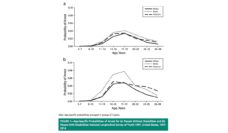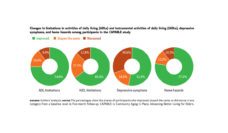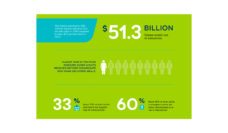In a recent study, researchers upend the widely held belief that disability among the elderly is impossible to change. By addressing both personal and environmental factors, the CAPABALE (Community Aging in Place Advancing Better Life for Elders) intervention helped low-income, disabled individuals over the age of 65 live at home longer and feel more confident in their ability to take care of themselves.
To test CAPABLE, researchers conducted a randomized clinical trial assessing participants’ ability to do home activities, home safety risk, and participant goals. Goals included things like taking a shower without help, walking downstairs, or getting dressed without pain. The intervention group received home repairs up to $1,300 per individual. Leveling floors or stabilizing stairs allowed participants to practice new activities at home safely. Finally, to address depressive symptoms, participants had regular meetings with study staff to develop and implement coping strategies.
The control group had the same number of interactions with study staff, but simply identified sedentary activities they would like to learn to enjoy more, such as listening to music or using the internet.
What’s striking about this intervention is that it caters to individuals in a way that health care normally doesn’t. Rather than assuming one-size fits all approach, researchers identified that individuals’ unique personal and environmental needs and sought to address each of them.
As we approach 2030, expanding CAPABLE and programs like it should be a priority.
Nine in 10 intervention group participants reported that, overall, they benefited from the program compared to six in ten of control group participants. This included feeling that the program made it possible to live at home longer (79.8% vs 43.4%) and made life easier and living at home safer (82.3% vs. 43.1%). Participants also felt better equipped to take care of themselves as a result of the program and reported that CAPABLE lessened upset, associated with their disability than control groups members.
Researchers also reported that CAPABLE has the potential to keep costs down without compromising quality of care. In fact, the Centers for Medicare and Medicaid Services (CMS) estimates that the average CAPABLE participant would save Medicare $22,000 over 2 years.
Programs like CAPABLE are especially important as the US will have more people above the age of 65 than children by 2030. As people age, many will confront illness and disability – and their associated costs. In 2012, the CMS reported that per-person health care spending among those age 65 and older was five times higher than any other group. The steady rise in Medicare spending has even raised concerns about how long Medicare can remain solvent. In 2018, it was projected that the Medicare Trust Fund (the account all Americans pay into to finance Medicare) would run out of money by 2026.
Elderly individuals who are both low-income and disabled are typically eligible for both Medicare and Medicaid (also known as “dual eligibles”) and cost CMS over $300 billion annually. Given that disabilities are common among elderly individuals and are associated with poor quality of life, depression, increased illness, and other negative effects, an increased focus should be placed on how to implement programs like CAPABLE that help individuals regain or maintain functional status at home while also reducing costs.
So far CAPABLE has been implemented in 22 cities and 11 rural areas. As we approach 2030, expanding CAPABLE and programs like it should be a priority.
Photo by David Sinclair on Unsplash














